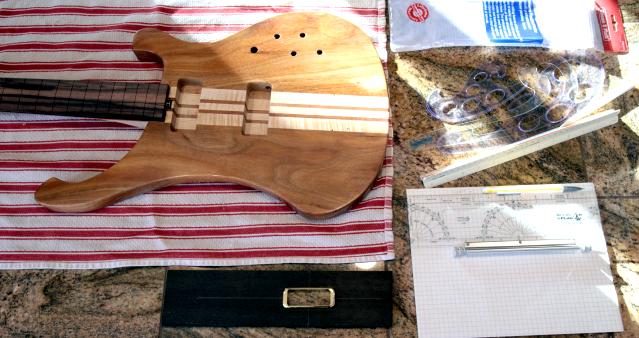I wonder if Nicholson files are STILL as soft as butter-those are made in Mexico now,you know. I'd call Stew Mac and ask if their files are old stock still made in USA. You will probably have to speak to a tech. Those are cut off,so the brand is eliminated,so you can't tell where the file came from.
I just looked at the files in your link,John. Those are actually LATHE FILES. They have been cut down to length to make them fit the wooden blocks. A horse file would do just as well,and they are very sharp,more so than lathe files.
I make files screwed to a wooden block for leveling FRETS by drilling a hole in each end of the file with a cheap carbide tip masonry bit. I use a 3/16" for the through hole. Run the masonry bits as fast as your drill press will go. The chips will be orange hot. Don't worry about it. The carbide takes the temper out of the steel,and scoops it out. Let off every several seconds with the drill. The brazed tip can melt loose and the tip comes off. Buy more than 1 masonry drill while you are at the hardware store.
I countersink the holes to receive the flat head screw with a larger masonry bit. You can run it slower since you already have made a pilot hole. Probably would screech loudly if run fast anyway.
Don't try to do this drilling with a hand held drill. It won't run fast enough,and probably the drill will skitter all over the file and ruin it.
For my FRET files,I just used an ordinary 8" mill file with the tang ground off. I carefully check the file by sighting down it to make sure it doesn't have an "S" curve in it. All files are curved a bit,it seems,except special files like pillar files. Drill your countersink holes so that you are screwing the hollow side to the wood. The wood will pull the file straight,or you can add some paper shims under the center of the file to make it straight,or slightly convex. I make mine slightly convex to prevent the ends of the file from whacking into frets as it is used.
For leveling the actual WOOD,I'd recommend getting a farrier's horse rasp. One side is a very coarse rasp,but the other is a real sharp extremely coarse cut regular file. You'll have to clamp the file TANG UP in a vise,cover the end sticking up with a HEAVY rag,like an old towel,to prevent shards from flying all over the place. They are very sharp where broken. Use a HEAVY hammer. I made myself one about 4" long. It is great for finish filing a guitar neck,eliminating any dips in the surface and making the back of the neck quite straight. I use both sides of my neck file,rasp first,then the file,to finish contouring necks. I really love my horse file. The FILE side teeth are very sharply cut. Great for wood.
If you are afraid to break the file,send it to me and I'll break it and grind the ends true for you. PM me for my address.
These horse rasps are not made by Nicholson,so are still made in USA as far as I know. And,it probably would be easy to pick out an old stock one that still says USA on it as they are not fast moving items.
P.S. Those horse files are thick enough I do not find attaching them to a wood block necessary. You may if your fingers are tender. But,I like using BOTH sides of mine. I'd just epoxy the file to the wood block if you decide it is necessary. Glue the RASP side to the block.





 Reply With Quote
Reply With Quote Having been in the R&D biz for a long time, working with lots of robots and things over the years, I always seem to need to sneak a file into somewhere it doesn't fit. Noooooooo problem.
Having been in the R&D biz for a long time, working with lots of robots and things over the years, I always seem to need to sneak a file into somewhere it doesn't fit. Noooooooo problem. 





